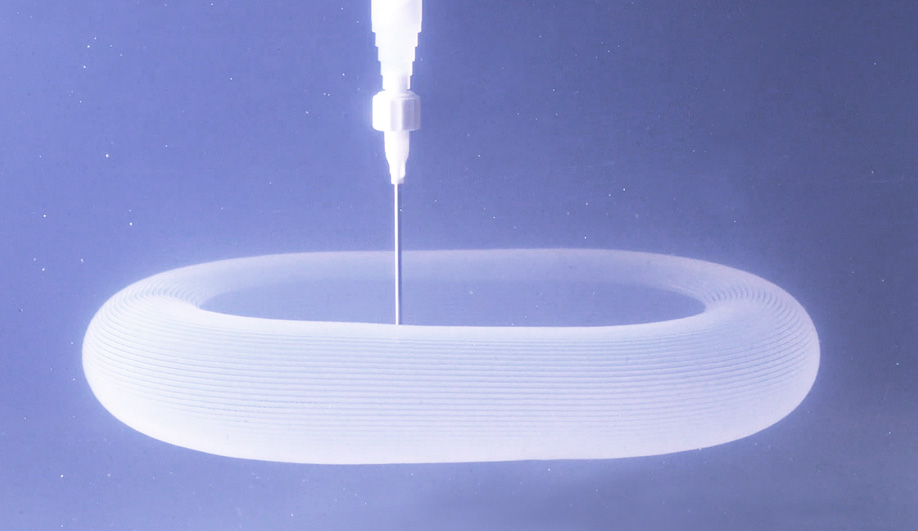Innovation is driven by creativity. And creativity, by definition, defies a one-size-fits-all approach.
Even so, the larger and more complex a project is, the more crucial it becomes to have a clearly defined roadmap to completion. Design thinking, then, isn’t a set of instructions for how to innovate; it’s a framework, or methodology, that helps to organize the steps that shape the creative process.
But this story isn’t about what design thinking is, or even how it can make your organization stronger (for that, you can look here). This story is about where design thinking can be applied—from a single task on your to-do list to the most comprehensive scale imaginable.
To get a better sense of how design thinking can drive innovation across scales, we spoke with Alex Theroux, RBC’s Design Lead, Innovation. He breaks down the ways design thinking can be applied into three categories: product design, service design, and transformational design.
Product Design
The smallest scale, product design, is also the most familiar. It occurs at the scale of a single product, like a discrete app or website with a specific goal in mind— in other words, one touchpoint, or a single point of interaction between you and your user.
Success and failure are usually measured pretty easily at this scale; either your product functions as intended, or it doesn’t. Success can be measured in terms of its technical ability to complete a task, or in more quantitative metrics like conversion rates, but whatever the case, analytics will let you know if your product is working or not.
Consider Netflix as an example. The company’s singular goal is to let users watch video content, but the digital products Netflix has developed to achieve this goal are numerous. There’s the website, which allows users to watch movies in a browser window. There are separate apps for Android and iOS. There are versions of Netflix tailored for gaming consoles and Blu-Ray players, or baked into smart TVs. Each of these represents a separate touchpoint—a different way for a user to access the service—and each one had to be developed with different functionality and features in mind.
Service Design
Although Netflix relies on a dozen different, discrete products, all of them work together to provide a seamless experience. Here, at the level of service design, larger considerations come into play. “Service design looks at how something could holistically impact an end-to-end experience,” Theroux explains, “including a mixture of online and offline engagement. It’s opening the context of the use-case a little bit beyond a single touchpoint to span multiple touchpoints.”
If the end result of product design is a website or app, the end result of service design is a meta-product, one that comprises the entire journey your users make. The focus of design thinking at this scale, then, is less on the type of person using a product or what they’re trying to achieve, and more on the full experience that all users share.
How will each product be used—not just now, but in the future? What changes will you have to make to your infrastructure, personnel or praxis to support the experience the product is supposed to provide? How will your products be integrated with each other, not to mention with other business solutions, like payment processing or an Email client? Service design considerations are exponentially more complex that at the level of product development, including not just functionality, but also how your product affects and is affected by the real world, before, during and after use.
Some of these considerations remain invisible to the user, while others have a huge bearing on the user experience. So while your success or failure at the service scale can be inferred from analytics, number-crunching may not be enough.
“At times, we look to anthropologic forms of research, or behavioural science, in trying to understand the fears and the values that affect someone’s decision-making process,” Theroux says. “Service design absolutely leans on analytics for tracking success. But there’s also a larger emphasis on sentiment and the emotional consequence of a solution.”
For project leaders working at the service scale, a clearly defined vision is the key to success.
“Because service design touches a number of different online and offline touchpoints, and therefore encompasses a much larger team, having a well-defined and easily understood vision of where the service project is going is mission-critical,” Theroux says. “Vision is, I would argue, much more significant at the service design scale.”
Think about how Netflix looks the same no matter what device you use to interface with it; how the system sends customized content recommendations; how it lets you pause a video on one device and continue watching it on another; how it walks users through the signup process; how users connect with customer support live chat, and how support workers access different parts of the system to resolve customer issues. Each of these functions represents a unique design problem, but together, they create a streamlined experience.
Transformational Design
Service design considers user experience at the largest scale that a company can provide. But what if we think larger still? As Theroux explains, “Transformational design takes design thinking to the level of social impact. It’s asking, ‘How are we currently positioned, and how can we leverage it to have transformational impact?’ So vision is even more critical in transformational design, because now, you’re not only trying to impact your service, but rather all of society.”
The goal of transformational design is to change the world and the way you operate in it to help you meet new goals, add value by diversifying your approach, introduce new business models, and branch out beyond your own organization. Can you mobilize your network to help remove legislative roadblocks? Can you capitalize on the data at your disposal in new ways? Are there natural partnerships you can develop with other institutions or businesses? Like any new initiative, transformational design begins with leveraging your existing strengths.
To get a sense of the scale at which transformational design can work, consider the fact that prior to 2010, Netflix operated in only one country: the United States. By 2017, it was in 190 countries. Just think about the changes that needed to take place for that to happen: not just product development, or structural changes within the company, but also negotiating content deals nation by nation, and finding ways to comply with or overcome regulatory restrictions, content restrictions, banking regulations and language barriers. To reach 190 countries, Netflix didn’t just adapt its business plan to the world; it adapted the world to its business plan.
It’s hard to imagine that Netflix tackled such world-changing plans without a clear structure in place to govern its decision-making—and in fact, its expansion was carefully rolled out across three phases, each phase learning from the one before. That’s at the heart of design thinking. “For me,” Theroux says, “design thinking is about querying culture. It allows you to root your queries in a real-world context, and bring the answers that you derive from that into the solution-making process.”
As for when to apply design thinking, Theroux says, “There’s no wrong time—but as early as possible with projects. It should be ongoing. You’re constantly probing society on the current state of things, to try to understand current pain points. It doesn’t require a kickoff. That sense of entrepreneurialism is something that designers are really starting to snap into, which is why a lot of organizations are seeing design thinking move up the org chart, from the doers to the thinkers, and even the leaders.”


